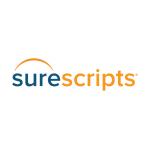Surescripts Leads Industry Transformation to NCPDP’s SCRIPT Standard v2017071 to Strengthen Patient Safety and Improve Workflow Efficiency

EHRs and Pharmacies Must Take Action Now to Minimize Disruption for Patients and Providers Ahead of September 1, 2021 Sunset Date for v10.6
ARLINGTON, Va.–(BUSINESS WIRE)–#healthIT–On September 1, 2021, Surescripts will sunset v10.6 of its E-Prescribing and Medication History services, as part of the industry’s migration to the National Council of Prescription Drug Programs (NCPDP) SCRIPT Standard v2017071 that is required by the Centers for Medicare & Medicaid Services (CMS) for Medicare Part D. All electronic health records (EHR) vendors, health systems, pharmacies and pharmacy benefit managers (PBMs) who utilize Surescripts E-Prescribing or Medication History must complete their migrations to SCRIPT Standard v2017071 by September 1, 2021, in order for their users to continue to use these services.
“We are pleased to see the migration to the NCPDP SCRIPT Standard Version 2017071 nearing completion and applaud those who have already transitioned,” explained Lee Ann Stember, President and Chief Executive Officer of NCPDP. “SCRIPT Version 2017071 contains important transaction enhancements to strengthen patient safety and improve the patient experience and patient care.”
In 2018, CMS issued a final rule adopting NCPDP SCRIPT Standard v2017071 for E-Prescribing and Medication History for Medicare Part D, and established a sunset date of December 31, 2019 for NCPDP SCRIPT Standard v10.6 and an implementation date of January 1, 2020 for NCPDP SCRIPT Standard v2017071.
NCPDP SCRIPT Standard v2017071 improves patient safety, reduces administrative burdens and enhances prescription accuracy while facilitating the transfer of prescription data between pharmacies, prescribers and payers. Once implemented, NCPDP SCRIPT Standard v2017071:
- Reduces the need for manual processes for patient data exchange that disrupt provider and pharmacy workflows, including the ability to note a patient’s allergies, international addresses and preferred language.
- Allows for the drug name and quantity of up to 25 different ingredients in one electronic prescription, making the electronic prescribing of compounded prescriptions possible.
- Enables the inclusion of diabetic supply information, IV administration information and wound care information on new prescriptions.
- Expands the sig, or patient instructions, field from a maximum of 140 characters to a maximum of 1,000 characters, which will help eliminate confusion and delays in pharmacies.
- Gives prescribers the ability to cancel a prescription and enables pharmacies to electronically request prescriptions for medications they have not previously dispensed or readily transfer prescriptions from pharmacy to pharmacy.
- Enriches medication history with additional data elements.
- Serves long-term and post-acute care (LTPAC) settings with transactions that bring greater clarity, automation and efficiency.
“For the past 20 years, we’ve worked to advance electronic prescribing’s positive impact on healthcare quality, cost and safety,” said Tom Skelton, Chief Executive Officer of Surescripts. “In response to emerging standards and in anticipation of regulatory requirements, we initiated the critical migration to NCPDP SCRIPT Standard v2017071 more than four years ago and have provided consistent and reliable guidance to support our customers throughout this process, but the network must take action now to avoid service disruption.”
Since 2017, Surescripts has supported the industry’s migration to NCPDP SCRIPT Standard v2017071. Today, the majority of the Surescripts network has successfully migrated for EPrescribing, including all PBMs and all health systems using eligible Epic software, but nearly half of other EHR vendors have not yet completed their migrations. EHR vendors and end-users can contact their Surescripts Account Manager to check the status of their migration and learn more about the work Surescripts has done to support the migration at www.surescripts.com/GetSCRIPT.
“We’ve always tried to stay on top of all requirements when it comes to E-Prescribing, and this was one of them,” explained Brenda Hall, Senior Software Engineer at Harris CareTracker. “We were glad that the Surescripts team was always there to help answer questions in a timely manner. As a result, we prepared for and completed our migration at the end of 2020, and since we had other projects lined up, getting this done meant we could focus on other things.”
E-Prescribing and Medication History are critical tools for increasing medication adherence and reducing prescription fraud. Integrated into prescribers’ EHR software, E-Prescribing and Medication History enable more efficient electronic prescription management and better informed, more efficient and safer care decisions. Electronic prescribing is required for some or all prescriptions in 32 states. In addition, CMS requires that prescriptions for most controlled substances under the Medicare Part D program be sent electronically, utilizing NCPDP SCRIPT Standard v2017071.
Visit the Surescripts website to learn more about NCPDP SCRIPT Standard v2017071.
About Surescripts
Our purpose is to serve the nation with the single most trusted and capable health information network, built to increase patient safety, lower costs and ensure quality care. Since 2001, Surescripts has led the movement to turn data into actionable intelligence, and convened the Surescripts Network Alliance® to enhance prescribing, inform care decisions and advance the healthcare industry. Visit us at surescripts.com and follow us at twitter.com/surescripts.
Contacts
Nora Langan
Surescripts
(215) 565-5790
nora.langan@surescripts.com

